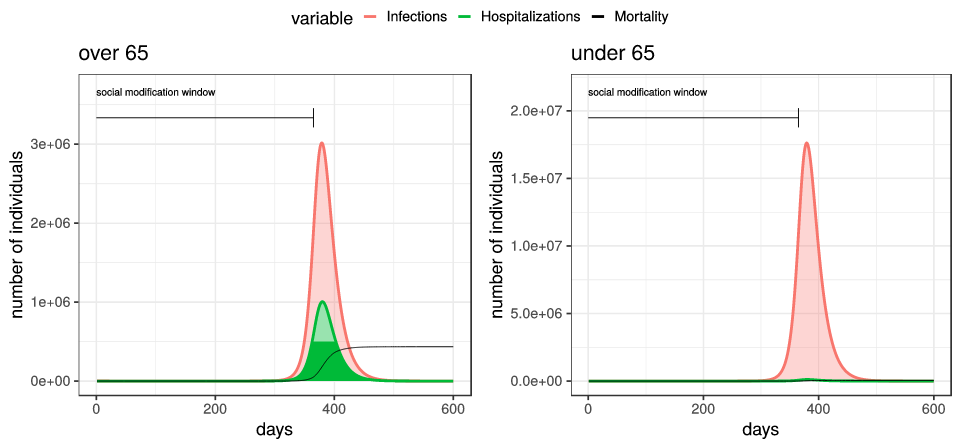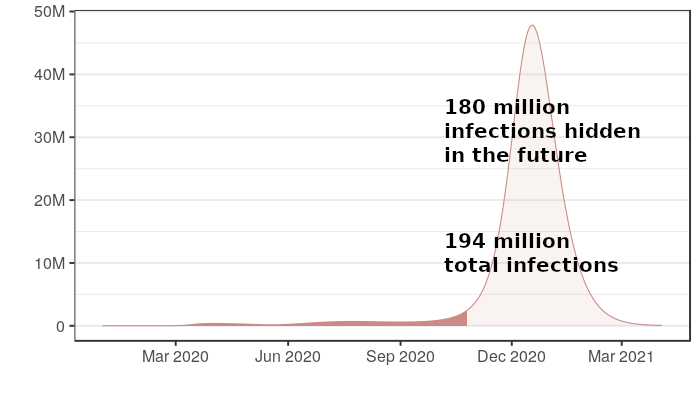With hospitals in coronavirus hotspots struggling to preserve personal protective equipment (PPE),
MedPage Today spoke with experts in engineering, medicine, and infection prevention on ways to extend their supply and use.
Infection preventionists spend their days “frantically searching” for
PPE, teaching clinicians how to reuse masks and gowns or how to create
their own, said Ann Marie Pettis, RN, BSN, president-elect of the
Association for Professionals in Infection Control and Epidemiology
(APIC) during a
press briefing last week.
“This goes against everything we have known from the scientific evidence and what we have always taught our staff,” Pettis said.
An APIC
survey
released on March 27 found that among 1,140 infection preventionists
across the U.S., 20% reported that their facilities have no respirators
and another 28% are almost out of them. Roughly half of respondents were
also almost or completely out of face shields.
That has prompted healthcare professionals and the agencies offering
guidance to look hard at ways to make available supplies last longer
and, in extreme situations, for workers to fabricate their own gear. In
many facilities, it’s simply impossible to put on a new,
fresh-from-the-box mask for every patient encounter. That means wearing
them longer and/or decontaminating them.
Option 1: Extended Wear, Reuse
The
CDC recommendations around optimizing the use of N95s fall into three categories: conventional, contingency, and crisis.
Already many hospitals in the contingency and crisis stages are implementing policies of extended use or limited reuse.
Kathleen Aumann Morales, PhD, RN, CNE, of Berry College in Georgia, said on a
webinar hosted by
The Infection Prevention Strategy (TIPS)
that she has heard of nurses getting one mask per day, per week, or
even every 2 weeks. Some nurses wear surgical masks over their N95
respirators to make them last longer, she noted.
In
CDC guidance
issued Tuesday, the agency pointed to studies demonstrating that the
virus that causes COVID-19 can live on plastic, stainless steel, and
cardboard surfaces for up to 72 hours.
The agency then suggested a passive decontamination strategy of
sorts: issuing five respirators to each healthcare worker seeing
COVID-19 patients. The worker wears each mask in the same order and
places it in a paper bag at the end of the day. If done correctly, there
should be a minimum of 5 days between each respirator’s repeat use, the
guidance notes.
But reuse, a “contingency capacity strategy,” is not without risks:
“There is perhaps something worse than no mask, and that would be
self-inoculation,” said Larry Chu, MD, MS, director of the Anesthesia
Informatics and Media (AIM) Lab at Stanford University Medical Center in
California.
It’s easy to imagine a clinician unknowingly placing a mask that’s
been stuffed in a pocket or bag and become contaminated with the
COVID-19 virus up against his or her face, Chu told
MedPage Today.
“If we remove a mask … it may be safest to only replace it with a clean
or disinfected mask,” he said. (Chu emphasized that healthcare workers
should always comply with their hospitals’ policies and that his views
are not necessarily those of Stanford Medicine.)
“Extended use is probably the safest way to go,” particularly for those in a designated COVID unit, Pettis told
MedPage Today.
In its guidance, CDC reminds workers who reuse masks to treat
respirators as though they are contaminated. Wearers should wash their
hands with soap and water, use clean gloves when donning and performing
seal checks, and inspect the respirator to ensure there’s no damage,
particularly to the straps, nose bridge, and nose foam material, and to
always avoid touching the inside of the respirator.
Pettis also noted that unused respirators that have passed the expiration dates on their labels can be used, per the CDC.
“Realistically, a lot of times expiration dates are over-cautious,” she said.
But if a respirator is “compromised” or if a seal check fails, the respirator should be discarded and replaced, the CDC advised.
Decontamination
Decontamination is in a kind of “Wild, Wild West” phase, Pettis said.
Despite there being no CDC-approved method for decontamination, the
agency said ultraviolet germicidal irradiation (UVGI), vaporous hydrogen
peroxide (VHP), and moist heat have shown “the most promise” as methods
for decontaminating respirators.
The CDC warned that decontamination and subsequent reuse is a “crisis
capacity strategy” because it may diminish a respirators’ level of
protection, a CDC spokesperson told
MedPage Today via email.
Changes to the respirator could reduce its filtration efficiency, its
breathability, or “degrade the straps, nose bridge material, or strap
attachments,” which could in turn affect how well a respirator fits, the
spokesperson noted.
There isn’t specific data to support the efficacy of decontamination
against the COVID-19 virus right now on respirators, and more research
will be needed to confirm that the virus is “inactivated,” noted the
CDC.
The FDA issued
new guidance
on March 29 explaining that during this public health emergency, the
agency “does not intend to object to the distribution and use of
sterilizers, disinfectant devices, and air purifiers that are intended
to be effective at killing SARS-CoV-2 [the virus that causes COVID-19] …
FDA believes such devices will not create such an undue risk, when
performance and labeling criteria are met.”
Option 2: Ultraviolet Light
John Lowe, PhD, of the University of Nebraska Medical Center College in Omaha, designed
a method for decontaminating N95 respirators using ultraviolet light.
The process works like this: Bags of used masks are transported to a
room inside the university’s medical center fitted with two ultraviolet
light towers. The respirators are labeled with the wearer’s first
initial, last name, and the date of first use, and the paper bags are
similarly labeled with the wearer’s full name and the unit to which the
respirators should be returned.
The respirators are hung on wires across the room and decontaminated
when the UV light towers are turned on. Afterwards, the respirators are
returned to the original wearer.
Chu and Amy Price, DPhil, of Stanford Medicine, who recently
tested five different methods of decontaminating respirators,
confirmed that UVGI was “safe and effective” in the models tested. (Chu
noted that Stanford’s AIM Lab COVID-19 Evidence Service Report is not
intended to advocate for any product or service.)
But Pettis said that while ultraviolet germicidal irradiation may be
relatively “tried and true,” it’s not an easy process: Light must reach
every part of the mask and absorption levels have to be monitored, she
explained, noting that her hospital, Highland Hospital of the University
of Rochester in New York, has chosen hydrogen vapor peroxide instead.
“Process-wise, it was just easier and we had more confidence in the
hydrogen peroxide vapor getting into everything that needed to be
decontaminated,” Pettis said.
William Anderson, of the University of Waterloo Faculty of
Engineering in Ontario, said on the TIPS webinar that UV radiation
doesn’t appear to harm the respirator’s capacity for filtration.
Still, he said, the buildup of material as masks are used and reused could potentially make breathing more difficult.
Anderson said he was not sure how many decontamination cycles the
process would allow per respirator, but Morales guessed an upper limit
of five.
Option 3: Vaporous Hydrogen Peroxide
Battelle Labs, a Columbus, Ohio-based nonprofit, received an
emergency use authorization
from the FDA on March 28 to decontaminate N95 respirators for reuse
using a VHP procedure that calls for 2.5 hours of exposure to
concentrated gases and a maximum of 20 decontamination cycles per
respirator.
VHP decontamination showed “minimal effect” on filtration efficacy
and demonstrated “99.9999% efficiency in killing bacterial spores” and
similar efficacy against bacteriophage viruses, the CDC noted in its
guidance.
But the elastic bands themselves can degrade after about 30 cycles, Anderson pointed out, citing an earlier FDA report on the
Bioquell HPV Decontamination system.
Anderson said that although some studies note concerns of hydrogen
peroxide residue on respirators, as long as enough time is allotted for
off-gassing, he does not anticipate a problem.
Overall, he called it a “feasible approach,” but expressed concerns
about throughput for VHP systems that hospitals already have on site,
which may take “multiple hours per batch.”
Battelle’s system, a “scaled-up version of VHP,” can handle “quite a
few masks, but deployment may take a while,” he added in a follow-up
email. Battelle is currently processing N95 respirator masks for
OhioHealth. In addition, Stony Brook University Hospital in New York has
plans to begin using Battelle’s Critical Care Decontamination System,
which can disinfect up to 80,000 masks in a day, a spokesperson for the
university said in an email.
Option 4: Heat
A third method of decontamination, moist heat, has been studied at
60°C and 80% relative humidity. In one study, it only minimally reduced
filtration and fit of the respirator,
according to the CDC,
while in a second it led to a “99.99% reduction” in H1N1 influenza
virus. One drawback from this method is the uncertainty around its
ability to disinfect different pathogens, the agency noted.
In addition, Yi Cui, PhD, of Stanford University, and colleagues have
experimental data
suggesting that, although different, use of dry heat around 75°C for 30
minutes can also decontaminate N95 respirators and maintain filtration
efficiency over several cycles.
But that process will require more research before it can be confirmed, he noted.
The CDC’s guidance found that decontamination with 160° C dry heat
reduced the efficacy of the N95 filter and “did not meet the levels that
NIOSH [the National Institute for Occupational Safety and Health] would
allow for approval,” but this is twice the temperature Cui’s team
studied.
The CDC guidance also noted that decontamination with an autoclave,
70% isopropyl alcohol, microwave irradiation, and soap and water
resulted in “significant filter degradation.”
What Not to Do
While the PPE shortages have encouraged clinicians to be innovative, experts shared certain do’s and don’ts:
- Do not bake a respirator in a home oven, Chu warned, as it could expose the wearer and others to the virus
- Do not use tanning lamps or nail dryers as a source of UV radiation,
Anderson said, explaining that those lamps typically use UVA radiation
that have a longer wavelength and do less damage to pathogens
- Do not randomly redistribute decontaminated respirators; clinicians
should write their names on their masks and each hospital should have a
system to ensure they are returned to the appropriate owner, said Chu.
Masks are disinfected but not cleaned. Not only is it “disconcerting” to
receive a mask with someone else’s lipstick on it, the process may have
eliminated the COVID-19 virus without inactivating all other microbes
Option 5: Homemade Substitute
As a last resort, homemade masks are “better than nothing,” Morales
said, but they’re more effective at “keeping the germ in than keeping
the germ out.”
Chu and his colleagues assessed
the filtration efficiency of different homemade materials using everything from vacuum cleaner bags to cotton T-shirts.
But as Cui pointed out, it would be impossible for a layperson to make “a high efficiency mask” with these materials.
At Pettis’ hospital, homemade masks are given to outsiders visiting
patients or confirmed COVID-19 patients who are being sent home. The
masks are laundered, of course, and could in the future be used by
clinicians to make their own N95s last longer.
“Could we get to the point where we do have to use them for the
staff? We could,” she admitted. “After this is all over, I think there
will be a lot of soul-searching to figure out how to improve and prevent
some of the issues that we’re facing right now.”
https://www.medpagetoday.com/infectiousdisease/covid19/85799





